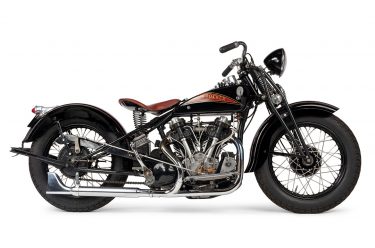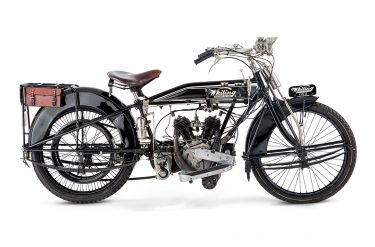When the first motorcycles appeared on roads at the end of the nineteenth century, it was inevitable riders would want to know whose bike went fastest, and who was the better, quicker rider. Thus, motorcycle sport was born and various forms of competition quickly developed — including road racing, cross-country, track racing and hill climbing — each prompting new and specialised motorcycle designs and configurations.
As early as 1908, motorcycles such as the Brisbane-built Spencer were racing laps of a dirt track at the Brisbane Cricket Ground, Woolloongabba. The sport got its start when riders used the loosely packed horseracing tracks and circuits, including the Brisbane and Sydney Showgrounds. By the 1920s, these races had evolved into a sport called Speedway, which was pioneered in Australia and went on to take the world by storm. The Australian Individual Speedway Championship is the longest running speedway race in the world, occurring annually since 1926.
RELATED: AUSTRALIAN-BUILT SPENCER


While many historians credit the birth of Australian Speedway racing to West Maitland, New South Wales, as the birth of Speedway in 1923, there is evidence that the first quarter mile Speedway track in the world was actually at Davies Park, located in Brisbane’s West End today. Within four years, it had spread internationally, with the first overseas race held in the United Kingdom in February 1928.
Brisbane has a long and colourful history of the sport with the first Speedway race held at the Brisbane Exhibition Grounds on 23 October 1926. In early races, the track was covered in grass, although the surface was soon destroyed by tyre treads. The slippery dirt track, while being safer for riders, also proved for a more thrilling and entertaining spectacle for audiences.
Speedway involves four to six riders competing over four anticlockwise laps of a slippery dirt or crushed rock circuit and requires the rider to expertly ‘powerslide’ around corners at high speed. Put yourself in the position of the rider daring enough to ride without gears nor brakes and hardly any suspension at ‘The Motorcycle: Design, Art, Desire’ showcasing 100 designs from 1871 until 2020.
‘The Motorcycle’ exhibition was in Brisbane’s Gallery of Modern Art (GOMA) from 28 November 2020 until 26 April 2021.
DELVE DEEPER: Browse the FULL LIST OF MOTORCYCLES
RELATED: Read more about THE BIKES ON DISPLAY
RELATED: Listen to the co-curators SELECTED HIGHLIGHT VIDEOS
1 Harley-Davidson Model SA Peashooter 1928
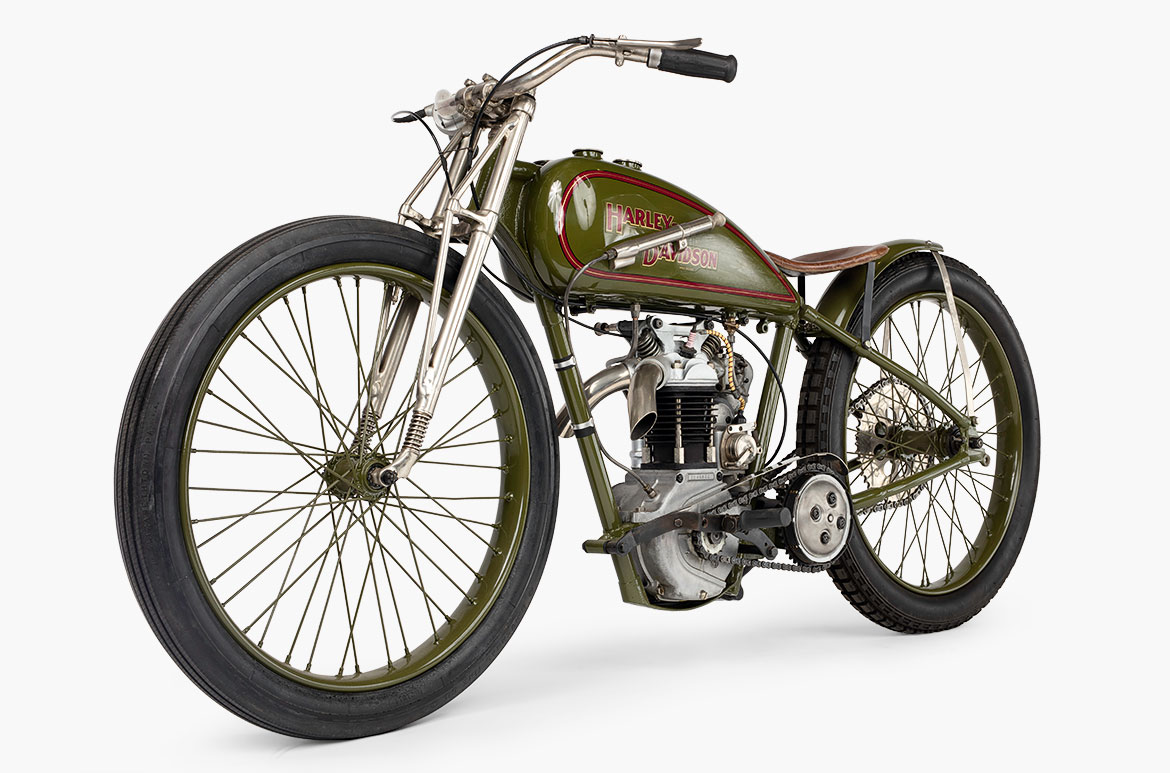
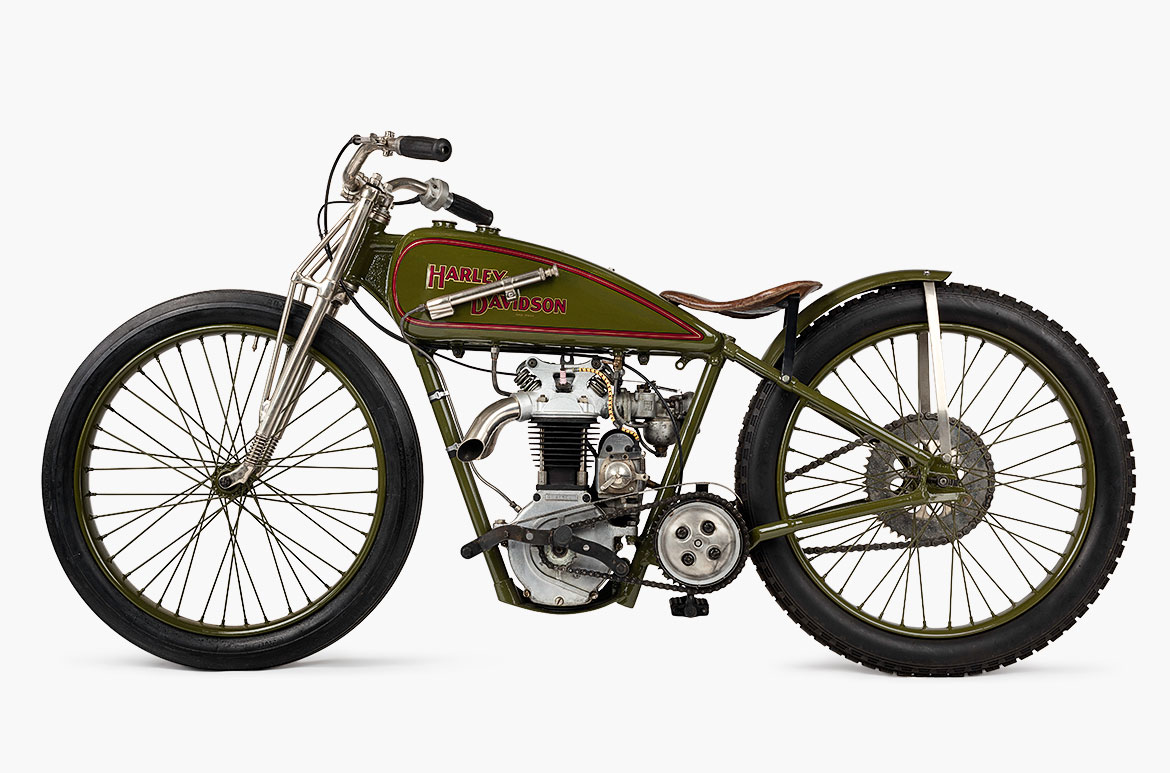
In the late 1920s, sales of large-capacity motorcycles began to decline, and brands like Indian and Excelsior flooded the market with smaller, single-cylinder racing bikes. Harley-Davidson joined in 1926 with the SA Peashooter, a side valve 350 cc single-cylinder motorcycle. The Peashooter gets its name from the unusual popping sound of its exhaust. To differentiate itself in the crowded marketplace, Harley-Davidson set its sights on the export market such as Australia, which were interested in smaller, more economical motorcycles. Few examples of this early Speedway or dirt track racing bike have survived, and the few that have are in Australia.
The brand Harley-Davidson began to appear on Australian roads in 1912, shortly after the company’s founding in 1903. The company’s oldest dealer, Morgan & Wacker, has been in business in Brisbane’s Newstead since 1917. The Harley-Davidson were well-suited to Australia’s harsh conditions, so while a great range of models have been in the country, few remain in pristine condition.
Specifications
Country: USA
Power: 25 hp
Engine: 346 cc OHV single
Designer: Harley-Davidson Motor Company
Production: 1928-1934
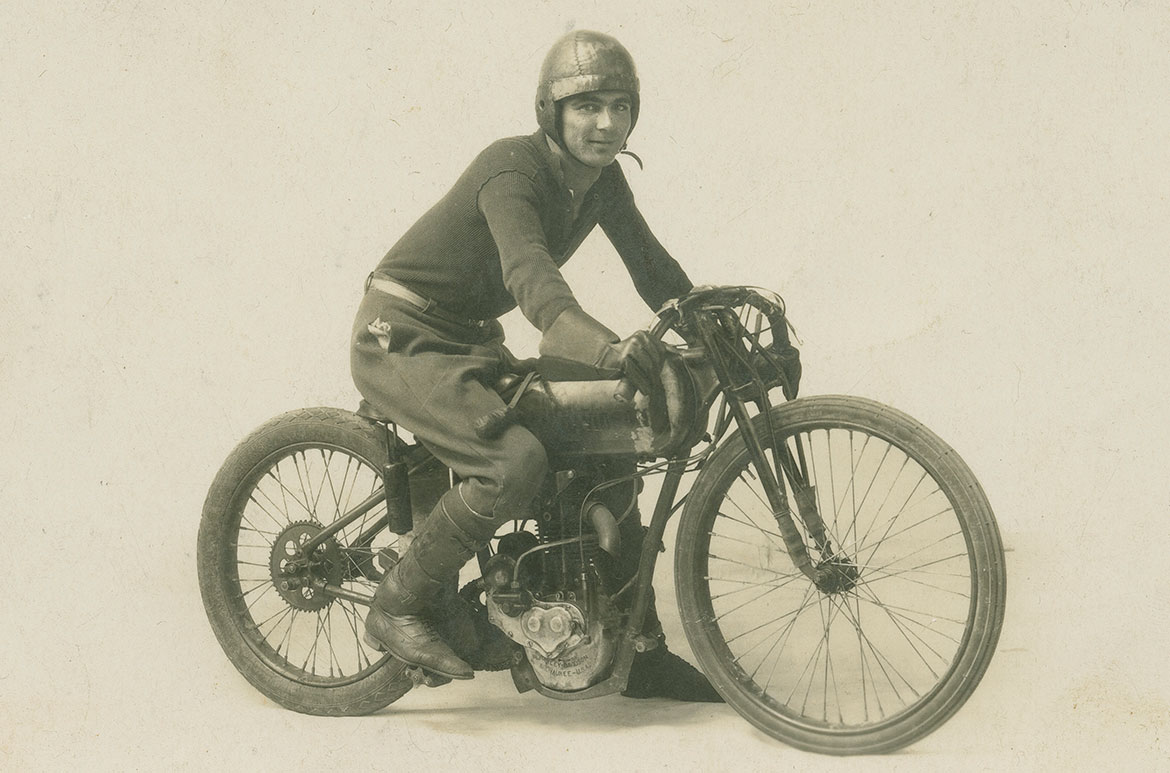
2 Douglas DT/5 Speedway 1929
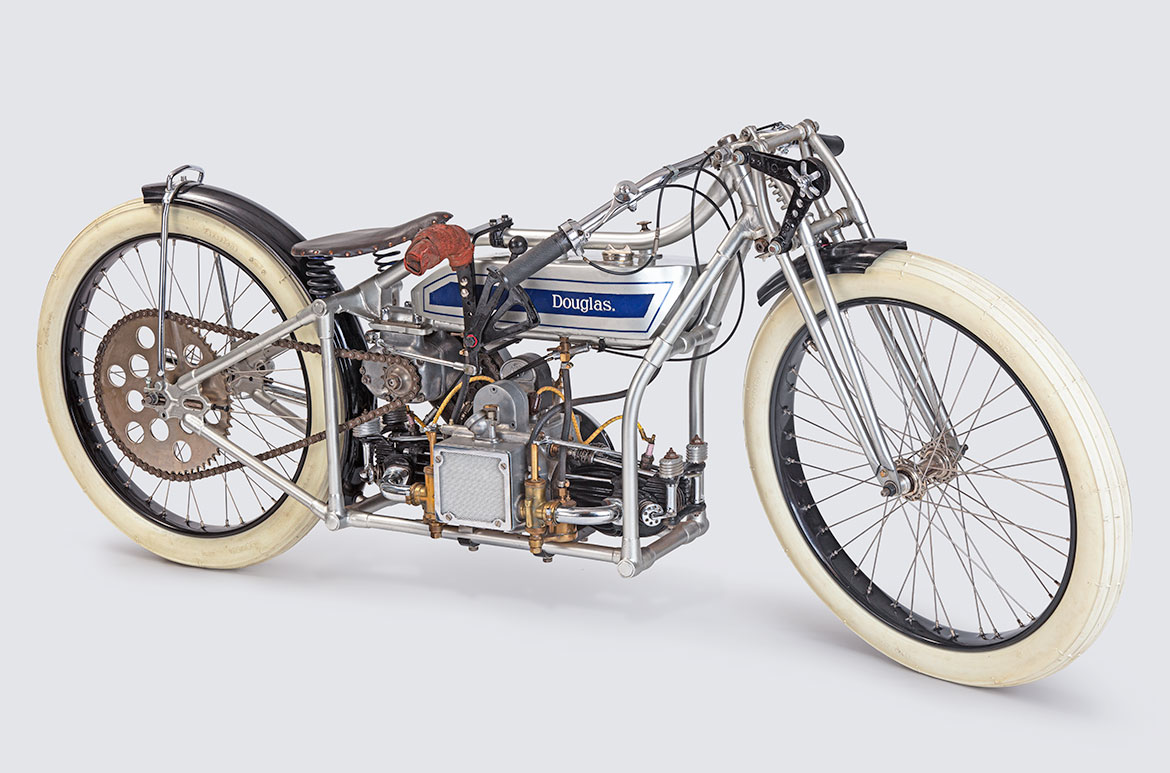

Bristol-based Douglas introduced their first dirt-track model only five months after the sport debuted in England in 1928. The DT/5 (Dirt Track 500 cc) carried the signature Douglas in-line fore and aft cylinders to give it the lowest possible centre of gravity which, combined with its long wheelbase, made it one of the most competitive Speedway bikes available in the late 1920s.
Specifications
Country: United Kingdom
Power: 32 hp
Engine: 494 cc OHV boxer twin
Designer: Cyril Pullin & Freddie Dixon
Production: 1929-1932
Fay Taylour, know as ‘Flying Fay’, was an Irish world champion Speedway rider who was often seen on a Douglas. Between 1927 and 1930 she was known as the ‘Queen of the Dirt Track’, and was the first woman to race in England. Taylour achieved success and set track records in Australia on her DT/5, until women were banned from Speedway racing in Australia and the United Kingdom in 1930. It was while on tour in Australia that Taylour learned that women had been shut out of all motorcycle racing.
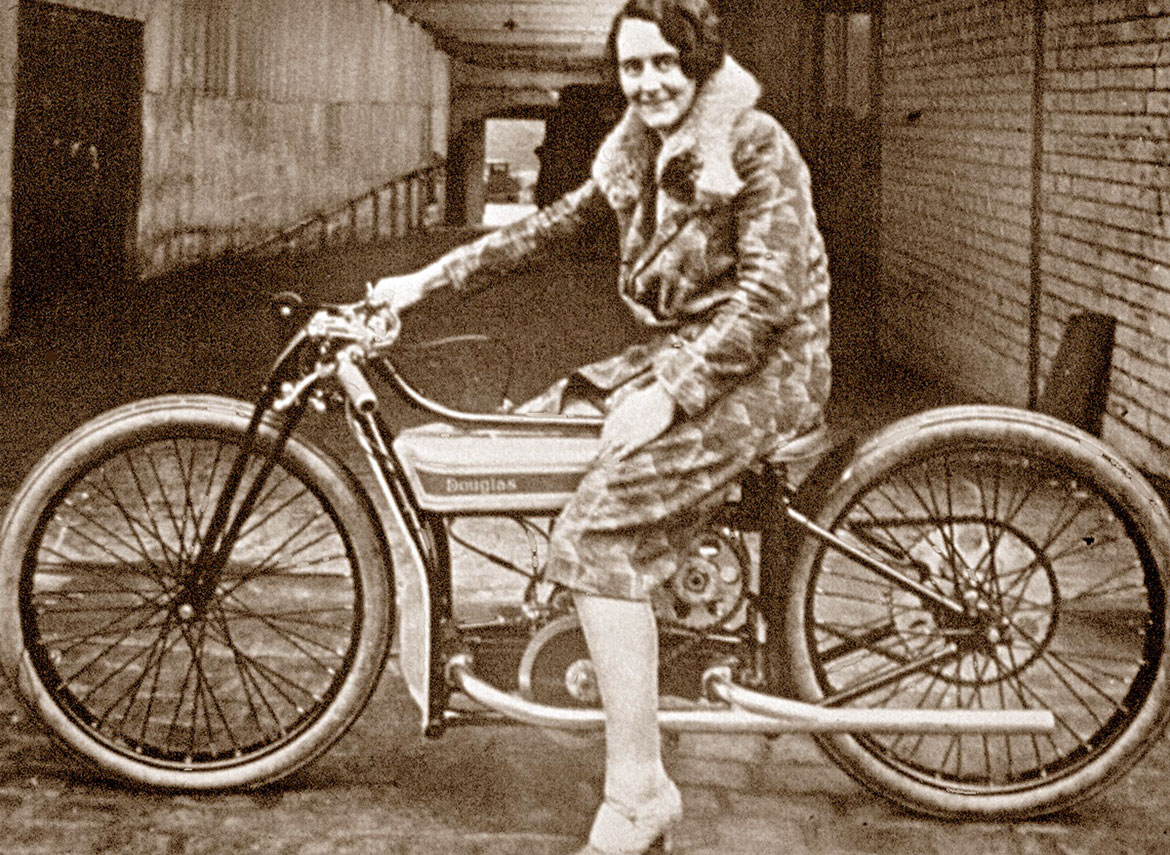
3 Crocker Speedway 1934
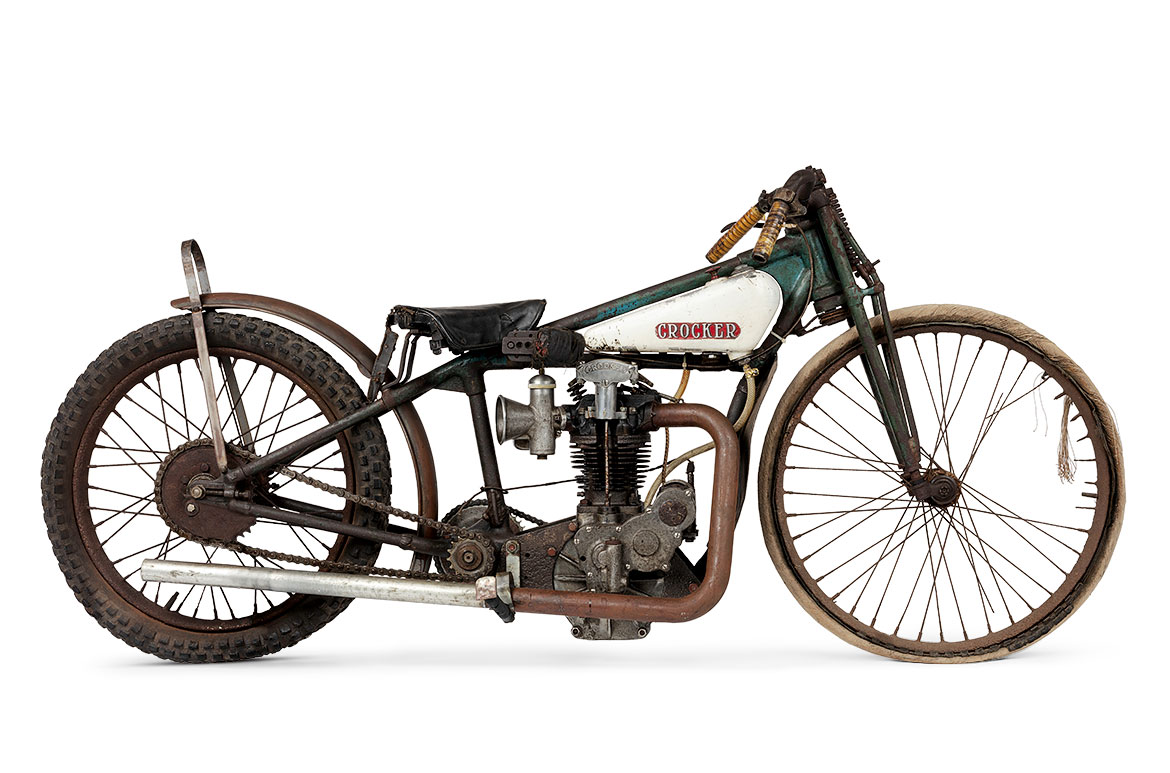
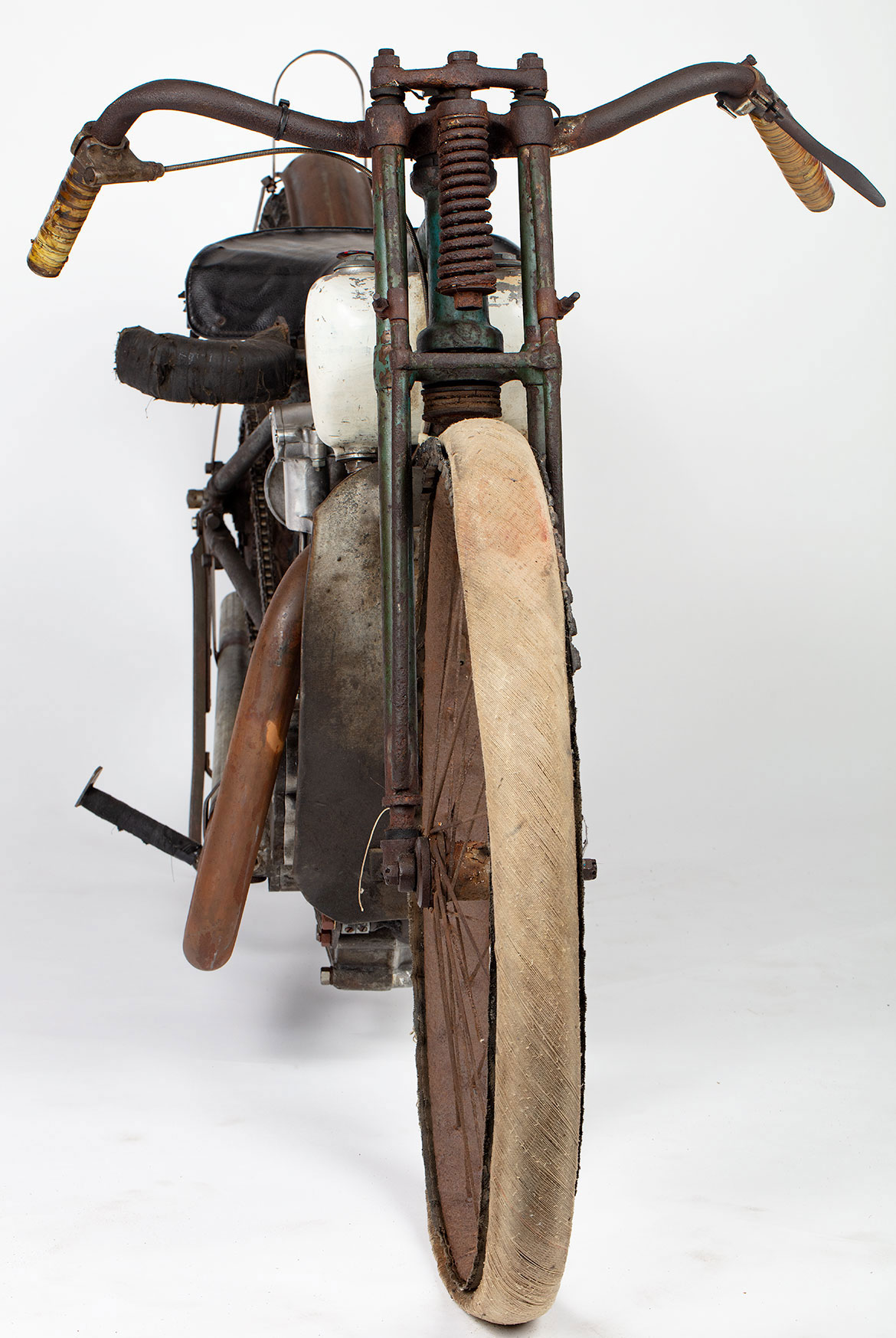
Motorcycle designer Al Crocker’s first motorcycle was a Speedway bike made by modifying an existing Indian 101 Scout. While mildly successful, the heavy motor weighed the bike down too much to be competitive. In 1932, Crocker went back to the drawing board and designed his own single-cylinder pushrod engine and motorcycle frame, giving birth to the famous Crocker Speedway. Despite huge success in races around the United States, the Crocker Speedway was only in production until 1935, when Al Crocker turned his attention to building V-twin engines.
Specifications
Country: USA
Power: 40 hp
Engine: 493 cc OHV single
Designer: Albert G Crocker & Paul A Bigsby
Production: 1932-1936
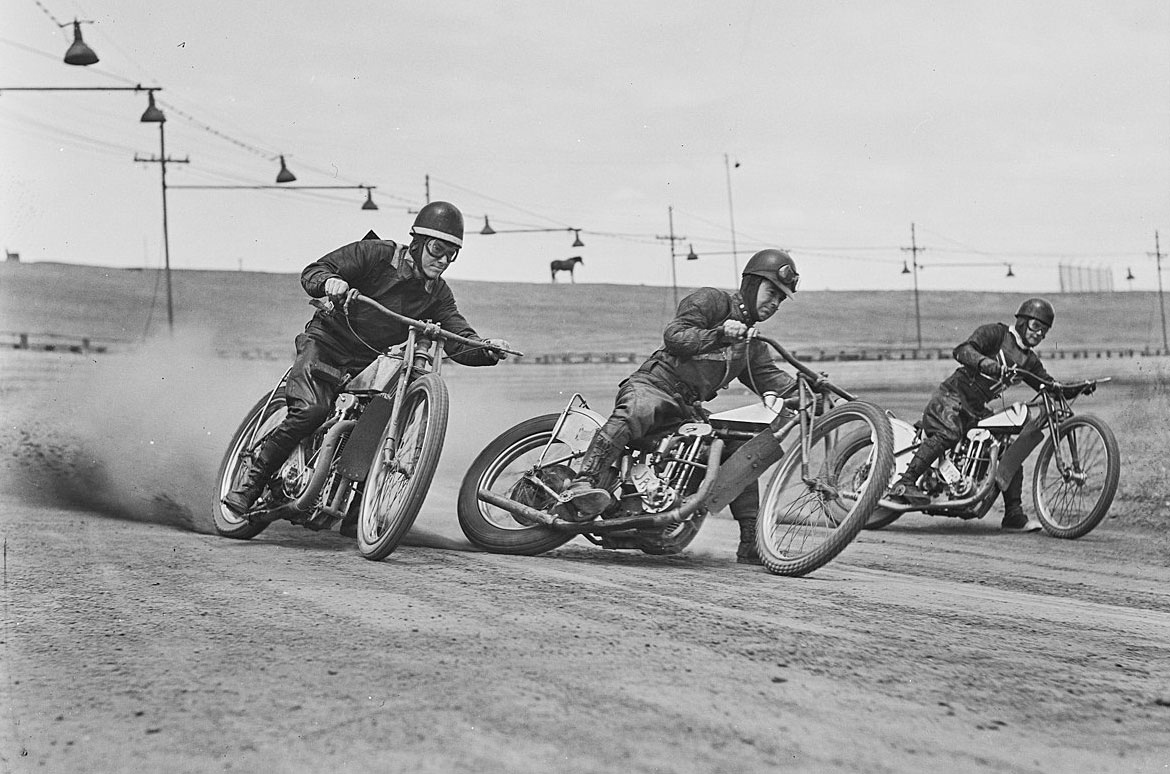
4 Huck Fynn JAP Speedway C.1949-1950
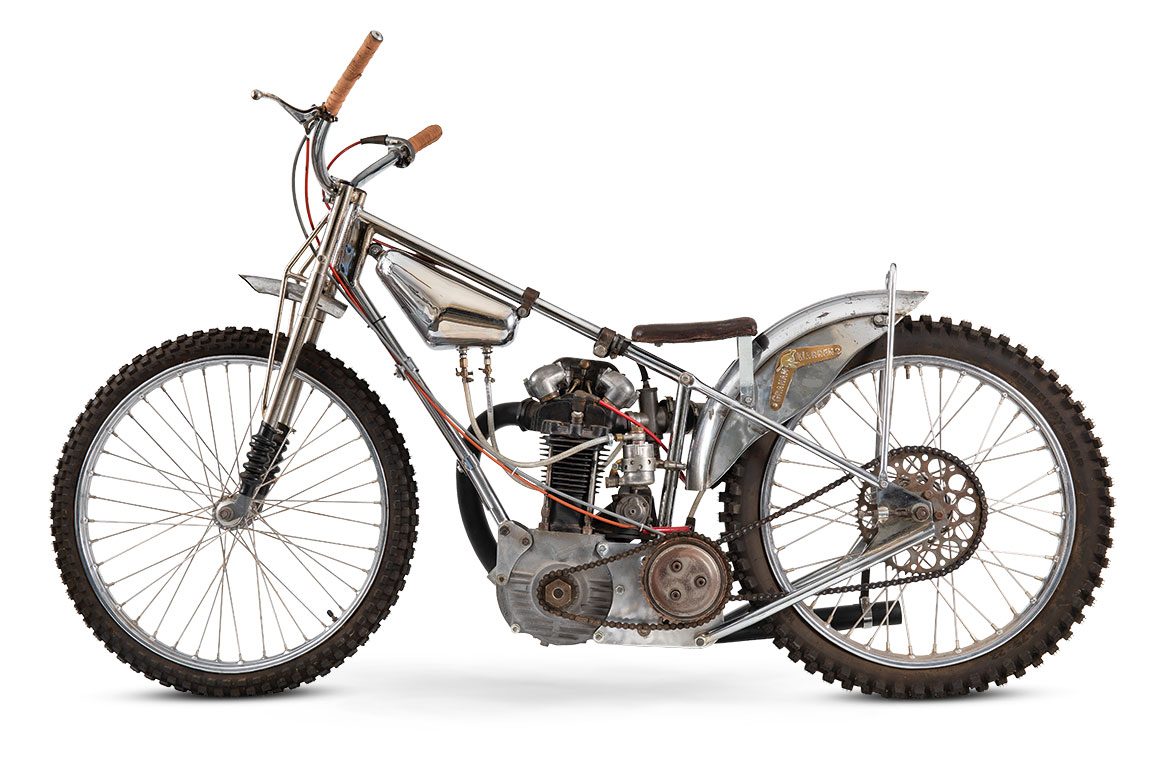
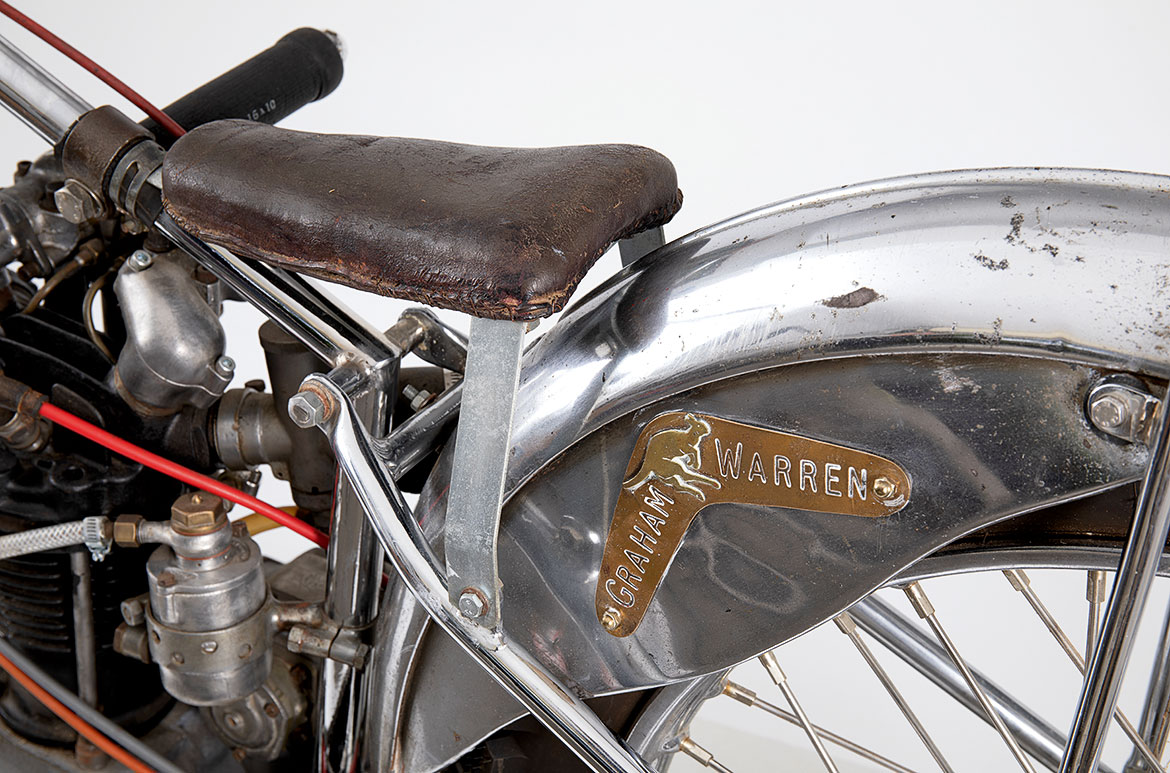
With its wide handlebars, spindly frame and compact motor — with an emphasis on handling, rather than comfort for the rider — the Huck Fynn is a classic example of a Speedway motorcycle. This motorcycle contains an engine from JA Prestwich Industries (JAP), who made their own motorcycles but were perhaps best known for supplying light and extremely powerful engines to other manufacturers.
This particular bike was ridden by Australian Speedway legend Graham Warren. Warren raced in the United Kingdom with the Birmingham Brummies Speedway team in 1948; quickly rose to prominence and was named captain of the Australian team in 1949; and qualified for the World Championship of Speedway from 1949–53.
Specifications
Country: United Kingdom
Power: 45 hp
Engine: 497 cc J.A.P. OHV single
Designer: Huck Fynn
Production: Special, competition

5 Harley-Davidson XR750 1977

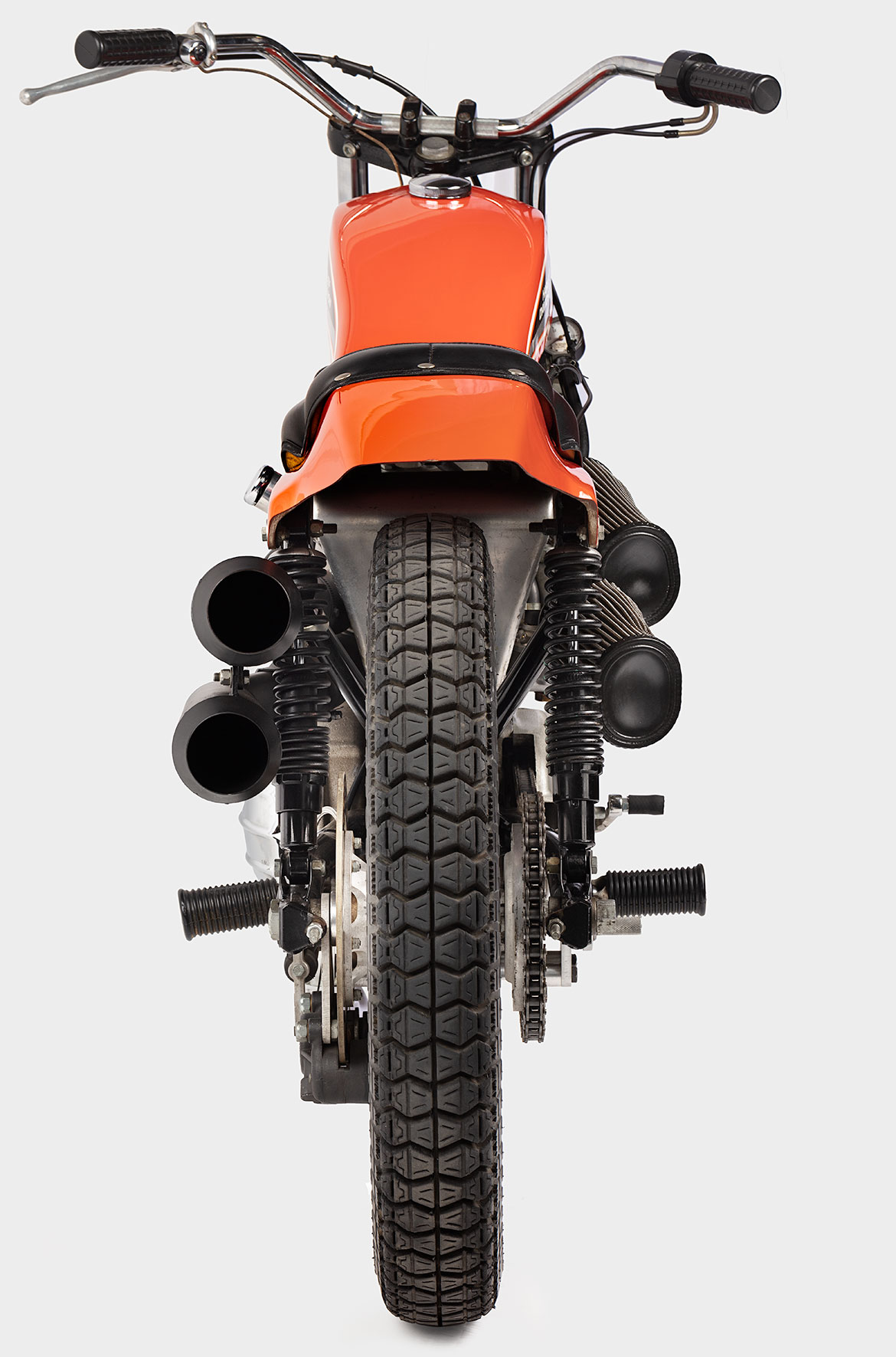
The American Motorcyclist Association’s Grand National Championship is one of the world’s foremost flat-track speed race series. From its founding in 1954, it had been dominated by Harley-Davidson, until changes to rules on engine requirements put them at a disadvantage against compact British and Japanese bikes. Finally, in 1969, rules changed to allow all types of 750 cc engines to compete. This spurred Harley-Davidson to quickly and cheaply develop the 750XR. Early iterations were prone to overheating and were unreliable, but by 1977 the model had well and truly established itself as the best in dirt or flat track racing.
The XR750 was the motorcycle of choice for legendary daredevil Evel Knievel. This bike was used for many of his most famous stunts between December 1970 and his final jump in January 1977. The bike’s light weight and dependability allowed it to reach speeds of up to 160 km/h at the point of take-off and to hurtle over 40 metres through the air with Knievel holding many motorcycle jump records. A 1972 model owned by Knievel is now in the collection of the National Museum of American History.
Specifications
Country: USA
Power: 82 hp
Engine: 750 cc OHV 45° V-twin
Designer: Dick O’Brien & Pieter Zylstra
Production: 1972- present

Read more about Motorcycles / Subscribe to QAGOMA YouTube to go behind-the-scenes
Show off your ride with #MotorcycleGOMA #QAGOMA

